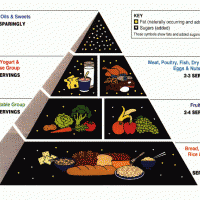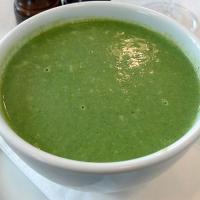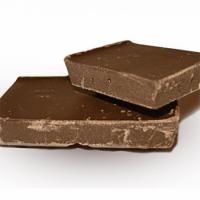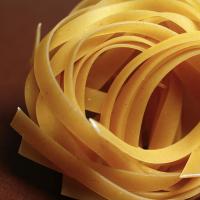Low Carb Basics
![]()
Low Carb Basics
By Doreen
If you are new to a low carbohydrate way of eating (WOE), you no doubt have many questions about how "the plan" works, and what to eat and not eat. What are the "rules"? Where can one find lists of "allowed" foods? Well, the best advice I can give is that you really need to read any or all of the excellent books on the subject. Low Carbing is NOT a short-term, quick-fix fad diet, where you follow a formula - eat this for breakfast, this for lunch, this for supper - for a few weeks, lose a few poounds then go back to your old eating habits.
It is vital that you understand low carbing really is about lifestyle change. You've probably noticed on the different sites you've visited that people refer to this as a WOE, or WOL (way of life). You MUST learn to recognize how food makes your body feel, and how to feed it properly. Low Carbing isn't just about cutting out sugar and starchy food. It also means replacing all those carbs you cut out with quality protein foods, and quality fats as well.
Below is a very basic, non-scientific explanation of how low carb eating will benefit your health and help your weight loss efforts. More specific questions are addressed in the FAQ section of the Tips page.
- Many people cannot eat large amounts of carbohydrate foods - sugars and starches - without making and storing body FAT.
- ALL carbohydrates, except for dietary fiber, are ultimately broken down into simple sugar molecules by digestive processes.
- The body will not burn fat for fuel as long as there is a steady supply of quick-to-burn sugar. Inversely, without sugar, the body will be forced to body fat for energy.
- The breakdown of fat will produce energy for the body, and ketones, which are eliminated in the urine.
- Insulin levels are stabilized because the pancreas no longer has to pump out large amounts in response to sugary, starchy meals or snacks. Insulin not only helps sugar enter the cells for fuel, it also promotes the conversion of excess sugar into FAT.
- So now, you are not only burning fat for fuel, you are also no longer making and storing body fat.
- Without surges and dips in insulin levels, your blood sugar remains stable.
- Result: You no longer have cravings and blood sugar swings. The presence of ketones helps control hunger. You lose fat and you lose weight.
There is a vast difference between "low fat" and "low carbohydrate" diets. The standard low-fat/low-calorie weight loss diets basically starve the body, and both fat and muscle end up being burned for fuel. You lose weight, but the loss of lean muscle tissue only serves to reduce your metabolic rate, thus slowing your efforts even more. With a properly planned low carb program, your body will burn mostly fat, and will preserve the lean muscle. If you exercise, you will add lean muscle while losing fat, which will increase your metabolic rate, and increase the fat-burning effect. Muscle tissue weighs more than fat, but takes up less bulk, so you may find yourself getting smaller in size without seeing a drastic drop on the scales. This makes it a good idea to check your measurements at regular intervals. Another difference between lowfat and low carb diets is the absence of cravings and hunger pangs. Until the excess carbohydrates are cleared from the system, there may be intense cravings. Once this is past though, the insulin and blood sugar levelling effects will serve to curb cravings. And most low carbohydrate plans allow unlimited amounts of allowed foods, so you eat when hungry, and as much as you need to ease your hunger.
The information presented here is very basic. It is best for you to arm yourself with as much information as possible by reading at least one of the books listed below. If you can't buy your own book, you may be able to borrow a copy from your local library. It will help you better understand the added health benefits of a low carb WOL, such as improved cholesterol levels, lowered blood pressure and other ailments. *NOTE* - please remember that although these programs are all low carbohydrate, they are each different to some degree. Foods allowed in one might not be allowed in another. It might be a good idea to familiarize yourself with more than one plan before deciding which one is best for you and your lifestyle and personal situation.
BOOKS
Dr. Atkins New Diet Revolution , Robert C. Atkins, revised 1999
Dr. Atkins Age-Defying Diet Revolution , Robert C. Atkins, 2000
Protein Power , Michael and Mary Dan Eades, 1996
the Protein Power Lifeplan , Michael and Mary Dan Eades, 2000
the Carbohydrate Addicts Diet , Richard and Rachael Heller, 1993
Healthy for Life , Richard and Rachael Heller, 1996
NeanderThin (Eat Like a Caveman to Achieve a Lean, Strong, Healthy Body) , Ray Audette, with Troy Gilchrist, 1999
Dr. Bernstein's Diabetes Solution , Richard K. Bernstein and Timothy J. Aubert, 2000
the Ketogenic Diet: A Complete Guide for the Dieter and Practitioner , Lyle McDonald, 1999
Sugar Busters! (Cut Sugar to Trim Fat) , Steward, Bethea, Andrews, Balart, revised 1998
Enter the Zone: a Dietary Road Map , Barry Sears and Bill Lawren, 1995
It is highly recommended you get yourself a good carbohydrate gram counter. Not all foods are labelled for carbohydrate content. The best and most inclusive nutritional facts resource is The Complete book of Food Counts by Corrine T. Netzer, 5th ed., 2000. Includes counts for calories, carbohydrates, protein, fats, sodium and cholesterol, and fiber - thousands of food items listed, fast foods, popular brand name foods. Atkins, Protein Power and Carbohydrate Addicts also publish handy carb gram counters to go with their respective programs.
For more information on these and other excellent books explaining low carb living, please check our Books page.
OFFICIAL WEB SITES
Atkins
Protein Power
Carbohydrate Addicts
Dr. Bernstein's Diabetes Solution
NeanderThin
Sugar Busters!
the Zone
G/O Diet
Adiposity 101 - not a book or a diet plan, but an excellent summary of the scientific basis of low carbohydrate, ketogenic eating.
-
Just Say No to Carb Phobia
Anyone who has been in a grocery store recently knows that
-
Low Carbohydrate Article Archive #2
Facts About Dr. Atkins Diet Calorie Intake. Dr. Atkins states
-
Is The Low Carb Diet Right For You?
The rate of obesity in humans is increasing each year and it looks li
-
Orange Almond Cake
Goo
-
What are the benefits of the low-carb diet?
Are you one of those who hate dieting? Well, you are not al
-
Ricotta and Espresso Cream
Ricotta and Espresso CreamMakes 6 servingsNo muss, no fuss! Just fast,
- DON'T MISS
- Using Food to Heal Emotions
- Low Carb Diet - Eat More, Not Less
- Low Carb Diet - Weight Loss Benefits
- Atkins Diets
- Important Guidelines For Succeeding With Low Carb Diets
- Low Carb Snack Foods
- Fat Burning Tips
- Low Carb Diet Menu:facts About The Excessive Protein, Low Carb Diet
- No Carb Foods
- What’s better for You – low carb or low fat?




